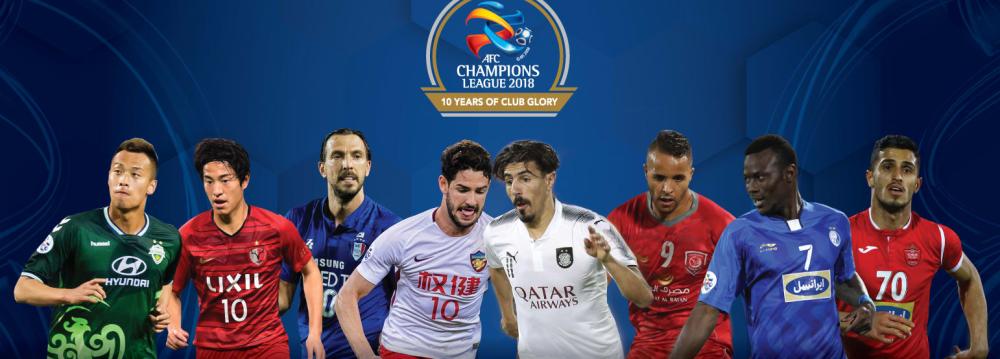Football giants Esteghlal and Persepolis learned the names of their rivals for the quarterfinals of AFC Champions League on Wednesday.
The draw was held at the AFC House in Kuala Lumpur and the eight teams (four in the west and four in the east zone) in the stage recognized their contenders, AFC reported.
Iranian and Qatari clubs comprise the four teams in the west zone, two teams from each nation. While it was possible for the clubs of the same country to be drawn against each other, now according to the result of the draw, Iranian teams are set to clash with Qatari sides.
After 27 years from being crowned at the AFC Champions League, Esteghlal will aim to return to glory and a third title when it faces two-time champion Al Sadd of Qatar on August 27. Esteghlal will play host to the Qatari side in Azadi Stadium of Tehran for the first leg match.
The second leg game between Esteghlal and Al Sadd is set for September 17 at Khalifa International Stadium in Doha.
Hardest Draw
On August 28 Al-Duhail team from Qatar will host Persepolis for the first leg of the games at Abdullah bin Khalifa Stadium in Doha.
Al Duhail boasts impressive domestic successes this year and will look to maintain their immaculate record and add a continental club silverware to their collection, but first will have to test their clout against the Iran Pro League champion Persepolis.
Persepolis manager Branko Ivankovic referred to Al Duhail as the hardest possible draw to face due to the unbeaten run of the Qatari side in the tournament.
Persepolis has yet to win the AFC Champions League and after a semifinal exit in 2017, Ivankovic’s charges will be aiming for the title. The Reds will play host to the second leg match of the stage at Azadi Stadium on September 18.
Eastern Clubs
Kashima Antlers from Japan, which has not gone beyond the quarterfinals stage, will welcome China’s Tianjin Quanjian, which has performed spectacularly in its first appearance in the AFC Champions League, and is certainly looking to extend its run.
South Korea’s Jeonbuk Hyundai Motors, champion in 2006 and 2016, will lock horns with fellow side Suwon Samsung Bluewings, which has also won the title twice - in the 2000/01 and 2001/02 seasons.
AFC General Secretary Dato’ Windsor John, who opened the draw ceremony, began by praising the progress the prestigious tournament has made since its rebranding, with the introduction of a new format, increased prize money and expanded competition from 28 to 32 teams.
“A decade later, we have a club competition few in the world can match,” said Windsor. “From record attendances to greater fan engagement, the AFC Champions League continues to capture imaginations in Asia and beyond. Above all, it provides the ultimate stage for the stars of the Asian game to shine.”
A Decade of Glory
The AFC Champions League was launched in 2002 as a successor to the Asian Club Championship, but 2009 marked a historic shift to enhance the stature of the competition and its transformation into one of the world’s best club continental tournaments.
After conducting extensive research and gathering the feedback of member associations as well as key commercial partners, the AFC launched several key initiatives in 2009 to set in motion the AFC Champions League’s significant rise in the last decade.
The participation criteria and principles launched in 2009, which saw 10 member associations earn direct entry into the group stages and four other countries going through the play-offs for two berths, set the tone for today’s competition.
In 2018, 11 member associations received an automatic bye into the group stages and another nine countries participated in the preliminary and play-off stages.
The format synonymous with the AFC Champions League today was established in 2009 when the competition was expanded to 32 teams. Eight groups of four teams were divided into East and West regions, with two teams from the group stage, instead of one, progressing to the knockout stage.
One of the Richest
The 2009 edition also started the gradual and continuous growth of the prize money as it grew nearly threefold to $1.5 million, from $600,000 the year before. Today, the AFC Champions League is one of the richest continental club competitions in the world, second only to UEFA, with this year’s winners set to receive the largest-ever reward of $4m, up from $3m last year.
The AFC Champions League has provided the ultimate platform for Asian champions to shine on the world stage, with the winners qualifying for the FIFA Club World Cup.
In the last decade, Asian teams have finished impressively in the top four on five occasions - top three in 2011 and 2015 and Kashima Antlers came close as runner-up in 2016.
The landmark changes inaugurated in 2009 also paved the way for greater engagement among Asia’s passionate fans.
The 2015 Champions League remains in the history books for providing breathtaking football for a record 2.28 million spectators.
It was the second time spectatorship surpassed the two million mark in the past five years, reaffirming the competition’s position as one of the leading club tournaments in the world.


